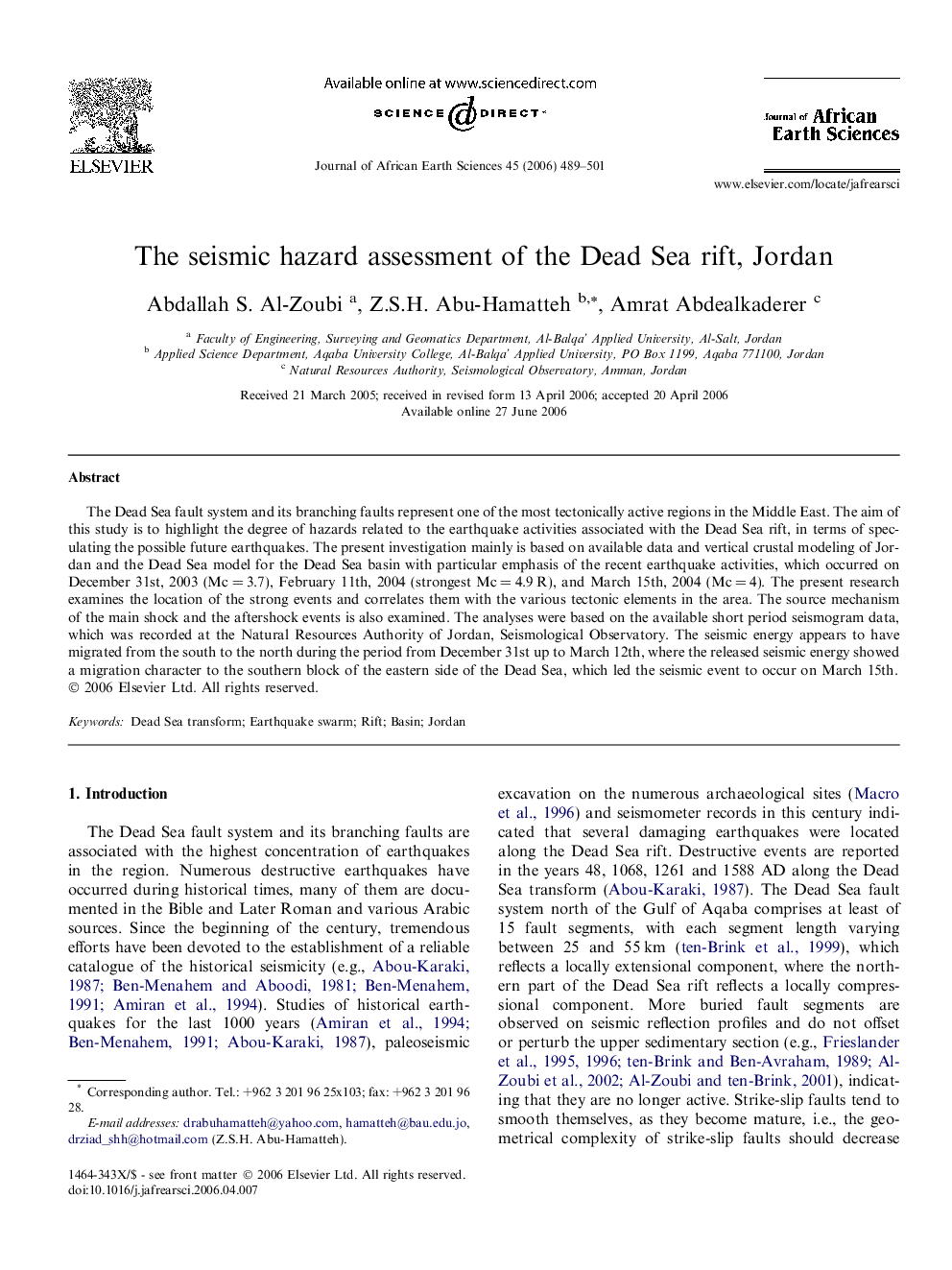| Article ID | Journal | Published Year | Pages | File Type |
|---|---|---|---|---|
| 4729782 | Journal of African Earth Sciences | 2006 | 13 Pages |
The Dead Sea fault system and its branching faults represent one of the most tectonically active regions in the Middle East. The aim of this study is to highlight the degree of hazards related to the earthquake activities associated with the Dead Sea rift, in terms of speculating the possible future earthquakes. The present investigation mainly is based on available data and vertical crustal modeling of Jordan and the Dead Sea model for the Dead Sea basin with particular emphasis of the recent earthquake activities, which occurred on December 31st, 2003 (Mc = 3.7), February 11th, 2004 (strongest Mc = 4.9 R), and March 15th, 2004 (Mc = 4). The present research examines the location of the strong events and correlates them with the various tectonic elements in the area. The source mechanism of the main shock and the aftershock events is also examined. The analyses were based on the available short period seismogram data, which was recorded at the Natural Resources Authority of Jordan, Seismological Observatory. The seismic energy appears to have migrated from the south to the north during the period from December 31st up to March 12th, where the released seismic energy showed a migration character to the southern block of the eastern side of the Dead Sea, which led the seismic event to occur on March 15th.
